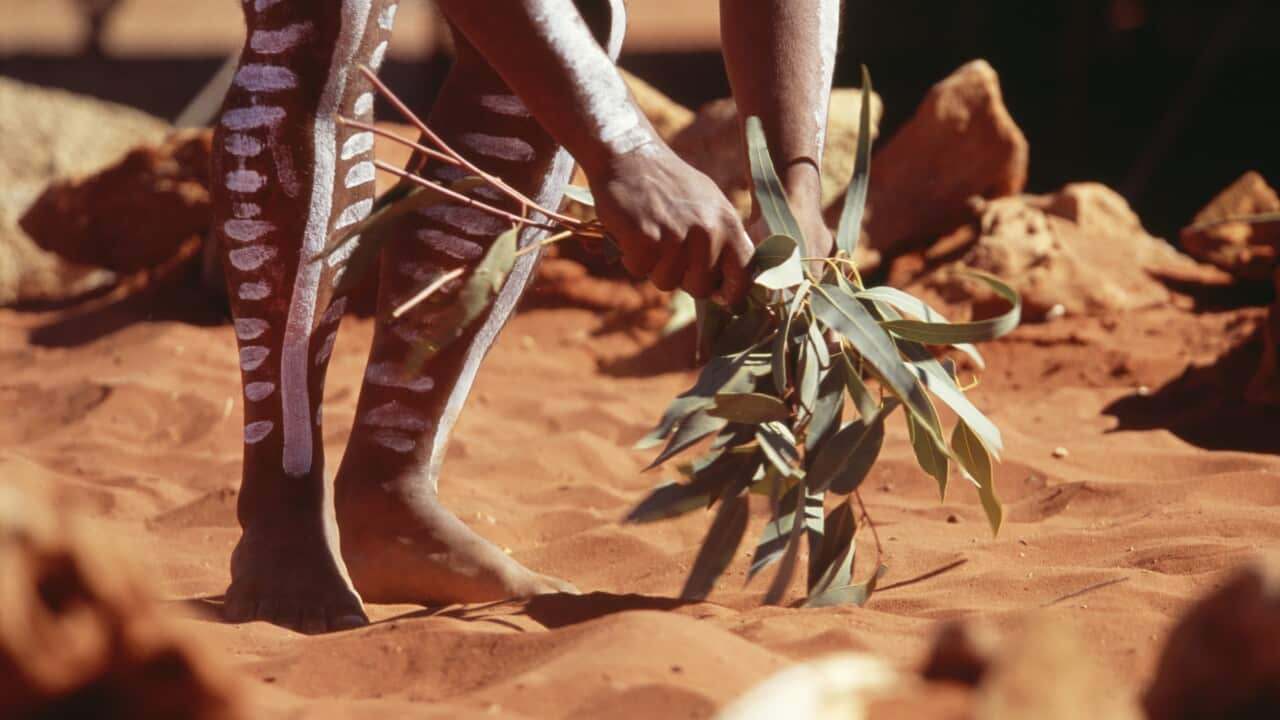Uluṟu is one of the most famous and recognisable landmarks in the world, an icon of the country’s landscape.
For Traditional Owners, the Pitjantjatjara and Yankunytjattjara, who refer to themselves collectively as Aṉangu, Uluṟu and Kata Tjuṯa, have held cultural significance from time immemorial.
In Tjukurpa (Aṉangu law and culture), care and protection of Uluṟu and Kata Tjuṯa are sacred responsibilities.
Uluṟu-Kata Tjuṯa National Park also holds importance in the history of Indigenous land rights.
On October 26, 1985, Uluṟu-Kata Tjuṯa National Park was handed back to Aṉangu. The then Governor-General, Sir Ninian Stephen returned the title deeds to Traditional Owners. The event became known as Handback and has been celebrated every year since.
This year marks 40 years since that historic event.
On October 16, 2025, Aṉangu were invited to commemorate the occasion in a ceremony at the Australian High Commission in London ahead of celebrations on Country.
Aṉangu performed a song and Inma (traditional dance and ceremony) for guests, including King Charles III.
They spoke of the significance of their sacred sites and the importance of ownership and management over their lands to preserve culture and tradition for future generations.
On 25th October 2025, to commemorate four decades since Handback, Uluṟu-Kata Tjuṯa National Park will host a public celebration concert at the Talinguṟu Nyakunytjaku sunrise site, featuring inma (traditional dance), live performances, markets and more.
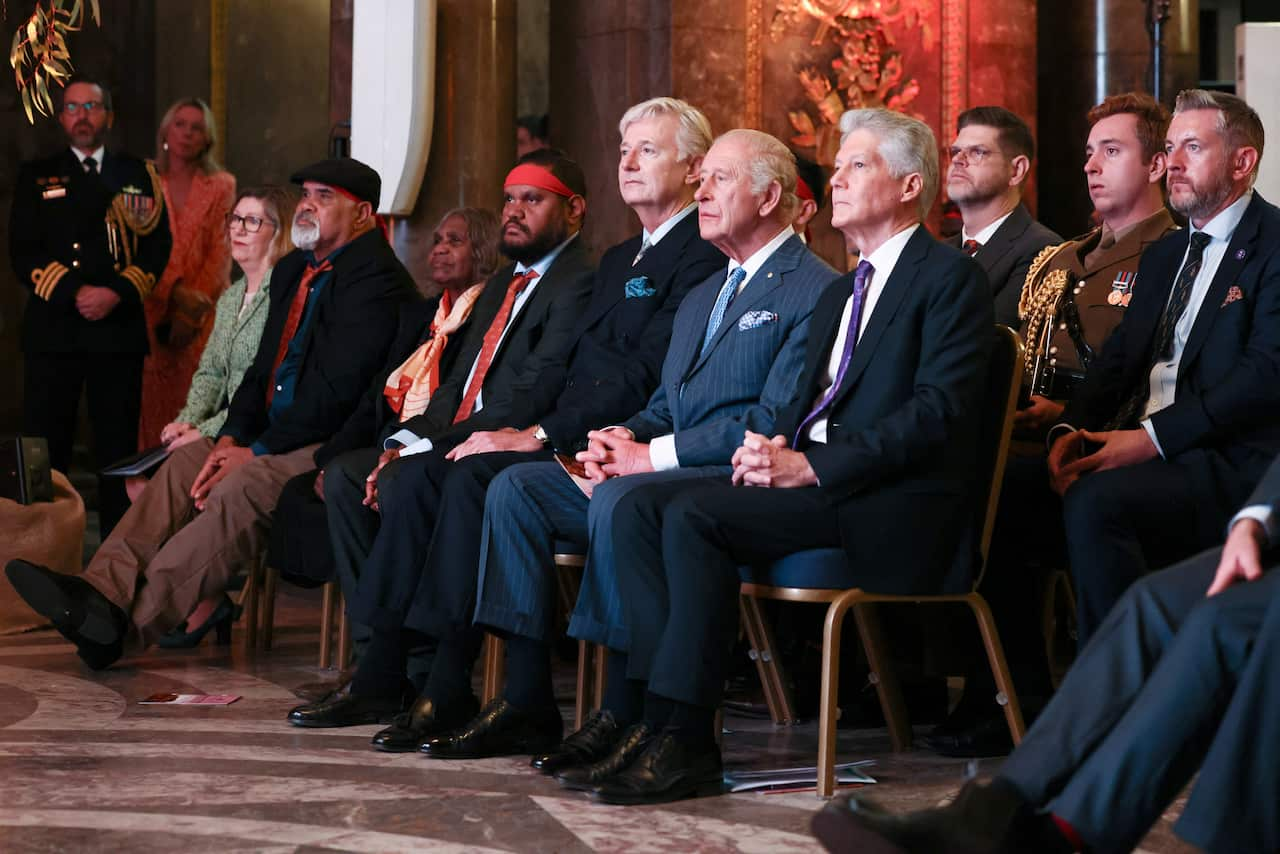
Aṉangu representatives, Sammy Wilson, Allison Carroll and Tapaya Edwards alongside King Charles and the Australian High Commissioner, Stephen Smith. Credit: Jack Taylor/PA
Before Handback
Long before Handback, Anaṉgu had campaigned and challenged the government to regain control of their Country.
In 1872 and 1873, European explorers renamed Kata Tjuṯa as Mount Olga after Queen Olga of Württemberg and Uluṟu as Ayers Rock, after Chief Secretary of South Australia, Sir Henry Ayers.
The early 1900s then saw the land around Uluṟu and Kata Tjuṯa declared an Aboriginal reserve and few non-Indigenous people visited the area before 1948, when Uluṟu was removed from the reserve and a road was added.
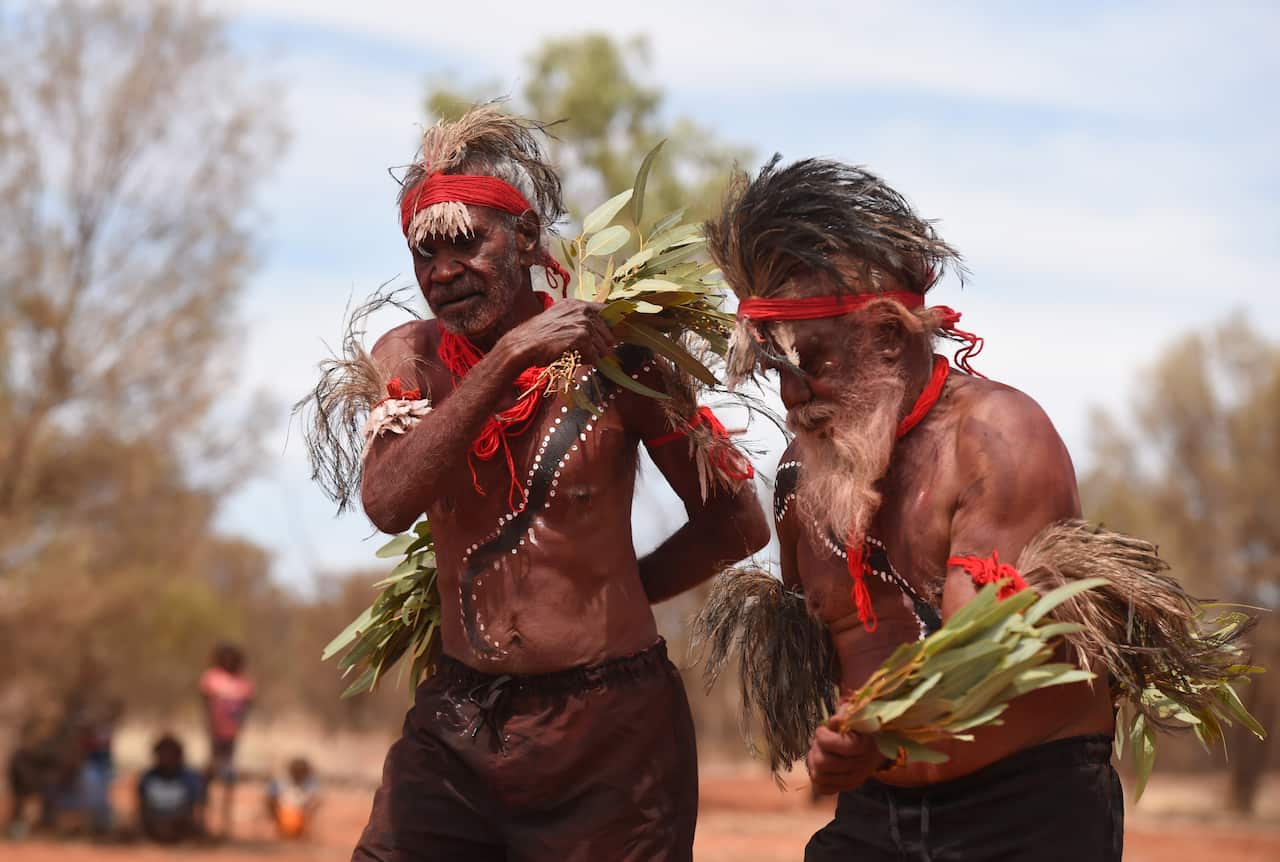
Aṉangu men dance during an event to mark the 30th anniversary of the Handback of Uluru at the community of Mutitjulu in the Northern Territory, Monday, Oct. 26, 2015. Credit: Dan Peled/AAP Image
In the 1950s the area became ‘Ayers Rock-Mount Olga National Park’ and an airstrip was added.
Tourism increased while Aṉangu were restricted access.
Despite this, Aṉangu connection to their lands and culture never ceased.
Aboriginal land rights movement and Handback
Breakthrough cases such as the Yirrakala Bark Petitions and the Wave Hill walk-off in the 1960s and 70s built momentum in the Aboriginal land rights movement.
The Wave Hill walk-off paved the way for the Aboriginal Land Rights (Northern Territory) Act in 1976 and in 1979, the Central Land Council lodged the successful Katiti Land Claim on behalf of Aṉangu, however, the national park was excluded.
Aṉangu persisted and continued to campaign against mining, tourism and the subsequent damage to sacred sites these operations had caused.
Finally, in 1985, the Hawke government amended the Aboriginal Land Rights Act, leading to Handback on October 26 that year.
Aṉangu representative Tapaya Edwards spoke to NITV in London and reflected on stories he was told of Handback.
“It was big, lots of people came together,” he said.
“It was Pitjantjatjara, Yankunytjatjara and Ngaanyatjarra but lots of people came. Aṉangu came together because they were there before [any] border, it was one.
“In 1985, I wasn’t around but I’ve heard the stories … it was really important for them.”
The same day, Aṉangu leased the land back to the Director of National Parks under a 99-year joint management agreement and the board of management was set up with a majority of Aṉangu members.
The joint agreement brought hope that living conditions and employment opportunities would improve in the area, particularly for Mutitjulu - the community where Aṉangu live within the national park.
Beyond Handback
Following Handback, the 1990s saw the park officially named Uluṟu-Kata Tjuṯa National Park, and signs were placed at the base of Uluṟu requesting, on behalf of Aṉangu, that visitors refrain from climbing it.
While the numbers of climbers decreased, tourists still attempted the climb, resulting in injuries, rescues, deaths, and irreversible damage to the sacred site.
In 2010, the Parks Management Plan outlined the intention to close the climb and in 2019 the Board of Management voted to end climbing from October 26, 2019, the 34th anniversary of Handback.
Although seen as a significant win for Aṉangu and the land rights movement, Handback did not deliver the improvements the community had hoped for.
On the 30th anniversary in 2015, local leaders shared their disappointment that decades on conditions and opportunities in Mutitjulu had not progressed.
"When we talk about economic development and self determination, you look around Mutitjulu now and your eye will tell you no lie,” Vincent Forrester said in an address at the time.
“You will see the mistakes of both the governments, both Liberal and Labor, but also the territory governments. Still living in third world conditions.
“We have a long way to go as a nation of people.”
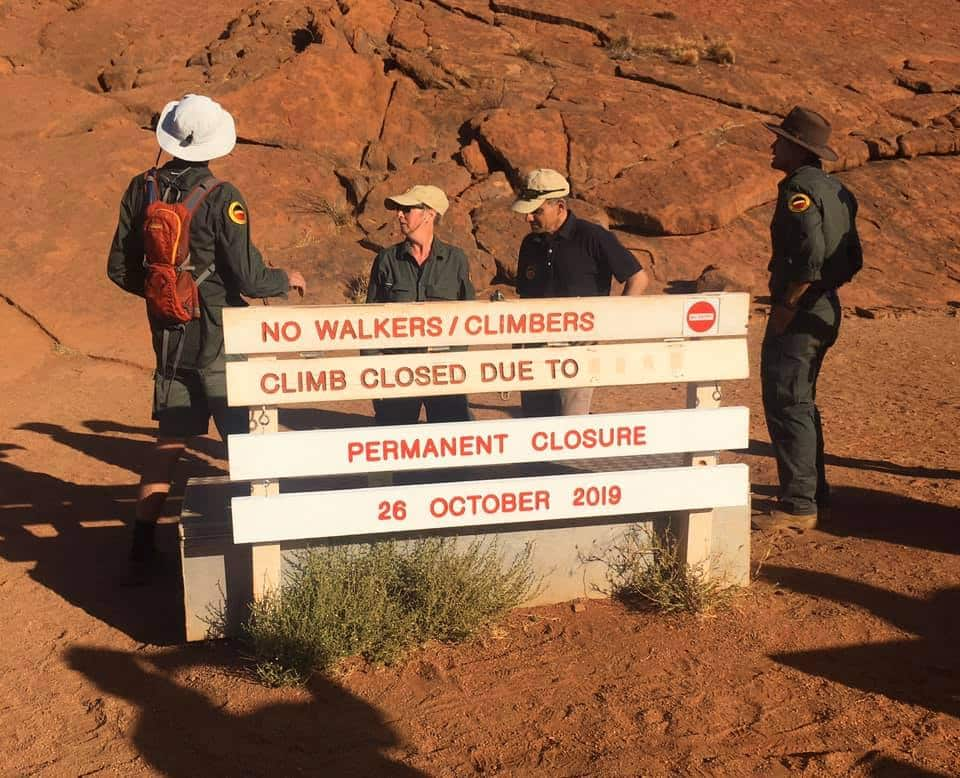
A sign at the base of Uluru announces permanent closure of the climb. Credit: NITV News | Rachael Hocking
40 years on and still much work to be done
In London this year, Aṉangu board member Alison Carroll acknowledged the work that continues across the country.
“In the past, when I was young, the Queen and the King previously before her, they did have ownership of Australia but now we’re in the process of saying some of the lands should come back to Aṉangu people and to Aboriginal people in Australia," she said.
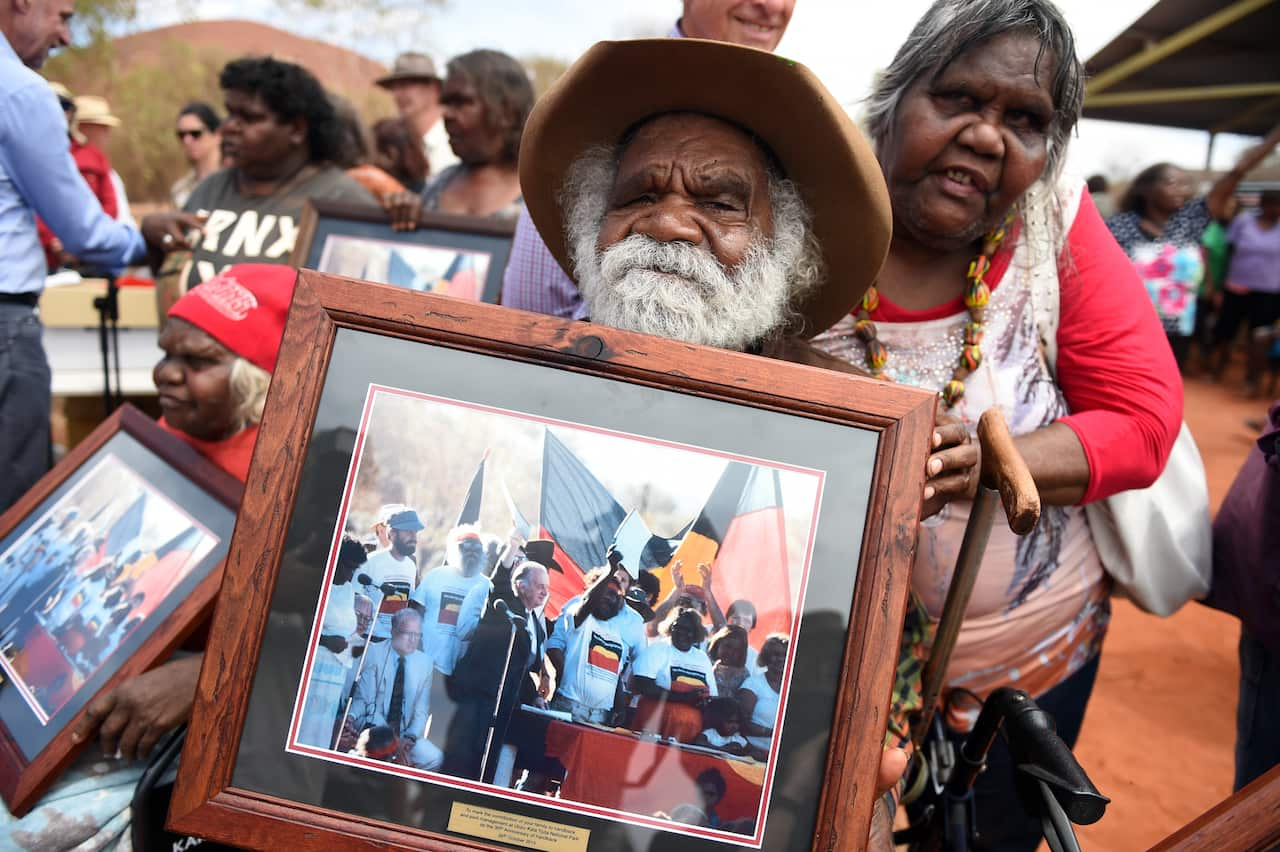
Reggie Uluru holds a framed photograph of himself at the original Handback in 1985, during an event to mark the 30th anniversary of the event at the community of Mutitjulu in the Northern Territory, Monday, Oct. 26, 2015. Credit: Dan Peled/AAP Images
“There is still much work to be done, and over the next 40 years we look forward to seeing our young people carry this flame forward as they learn Aṉangu traditional knowledge and Western knowledge to care for Country and keep Tjukurpa strong.”
Share




